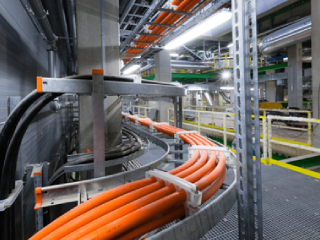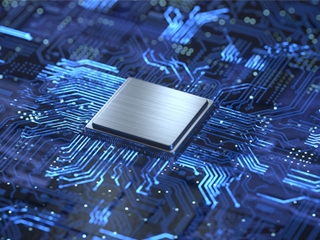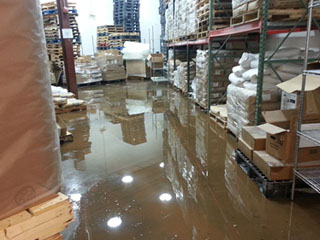Ever tagged an email important and kept it as a reference? Your company’s data center or server room houses that email. Did you upload a shared document in your team folder for easy access? Your data center will make space to save that file. A facility to organize and store critical data is the function of a data center or server room. The data center has a network of computing and storage resources. The hardware and equipment are facilities that route data from one user to another. In a data center, it’s crucial to monitor all environmental variables for each piece of equipment. This enables the technical team to implement immediate preventive measures if something goes wrong. Proper utilization of environmental monitoring sensors is essential to this ability.
There are two ways to run a data center. Traditional data centers and server rooms are in-house. More often, the data facilities are within the premises of the organization. On-site housing of physical servers is standard. However, the infrastructure has been shifting to a “cloud environment”. In essence, the data center is still present. It is in the procurement of data where the change happens. Business entities now engage with third-party data centers. The data center runs online storage. “The Cloud” is simply an outsourced data center.
However, no matter how you access and relay data, physical hardware in data centers is an integral part of it. Hence, the need to maintain its performance.
Factors that Influence the Monitoring of Environments in Data Centers and Server Rooms
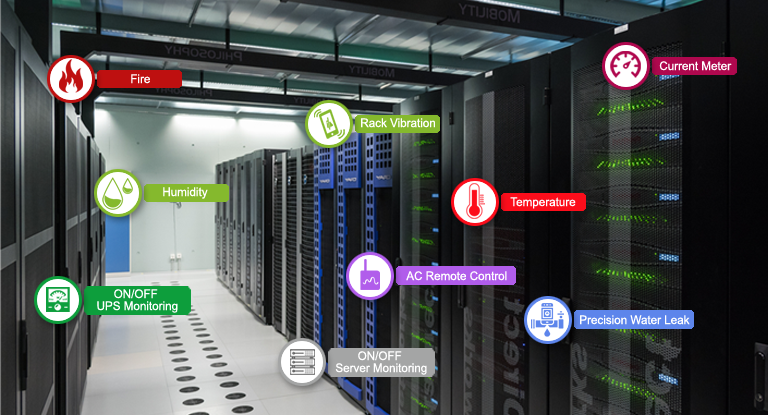
Photo Credit: www.itc-tel.com
Data centers comprise many elements, each with its own requirements. Considering these variables gives the technician the lowdown if it is running at optimal conditions. Specific equipment has environmental needs that need monitoring.
The use of monitoring tools can help maintain the prime condition of your data centers. The monitoring tools are specific to environmental factors such as:
-
Temperature
Physical infrastructures run around the clock. Overheating is one of the main risks for servers in a data center. It will cripple the data center‘s operation. Temperature control is necessary to check if the equipment is operating within the recommended temperature range. A comprehensive approach to temperature monitoring uses many temperature sensors. They are strategically located to provide a holistic temperature reading. Temperature sensors are such that of AKCP have temperature measurement ranges from -55°C to +75°C. You also have to make sure your temperature sensors are calibrated. AKCP NIST2 type sensors feature integrated calibration integrated checking. They can ensure the accuracy of reading as well. These kinds of sensors are ideal for data centers. It can maintain critical temperature parameters.
-
Humidity
Humidity control goes hand in hand with overseeing your temperature levels. Regulating both environmental factors should be complementary. High humidity can be corrosive to the hardware. Low humidity levels lead to issues with static electric arcing.
Monitoring your airflow is vital. Observing cooling fans ensures that proper airflow passes through your structure. Without these, moisture exists, and the temperature is erratic. Devices to measure the presence of airflows can aid your monitoring controls. These sensors detect airflow to avoid safety errors. It prevents the rise of moisture levels by dissipating heat.
-
Infra size
A small data center requires smaller parameter ranges. In the case of many pieces of equipment, monitoring is much more complicated. The need for human intervention is numerous. The risk of varying environmental parameters is also high. With the different hardware locations, the uneven temperature degree becomes a problem. Technicians would refer to temperature ranges rather than specific readings to ease this out. Despite that, temperature readings still need accuracy.
Bigger scales increase footprints. The physical location of equipment necessitates uniform monitoring. Reading accuracy may be tricky. It differs from one hardware to another because of where they are installed. Wireless sensors can help in high-density installations. Cabinet sensors are creating thermal maps throughout the monitoring area. In turn, thermal maps cover many hotspots depending on their location. These sensors can also check differential pressures. The varying pressure may occur in the front and rear of your data housing. The pressure checks can provide better cooling monitoring that inhibits moisture.
-
Power
Sudden bursts of static electricity are a choke point for data centers. Erratic volt discharge can ruin a data center’s performance. It is crucial to ensure an uninterrupted power supply to your facility. A consistent supply limits electrical failure.
Power monitoring will inhibit sudden electrical problems. Energy monitors can spot irregular electricity flow. Through checking of electrical current, the need to power boot the IT equipment is organized. The monitors will prevent power failure and decreases the risk of damage to your equipment. Other than that, the monitors also help inefficient power consumption.
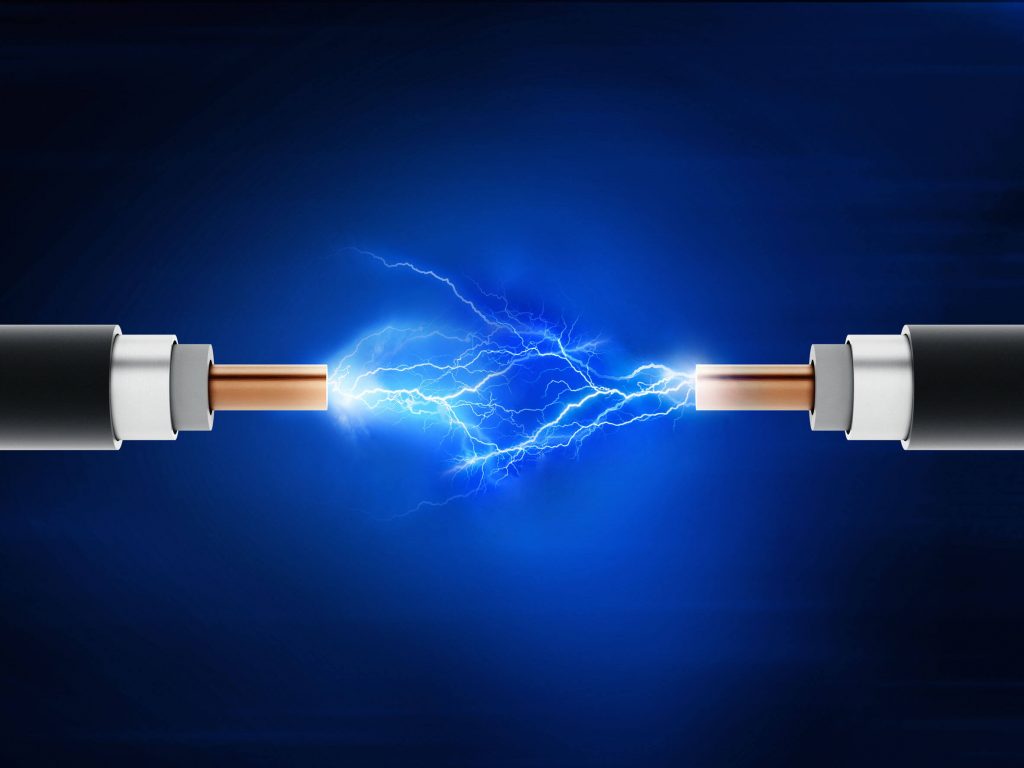
Photo credit: www.ldpassociates.com
A useful monitoring tool can gauge power usage effectiveness. These calculation sensors can detect your power usage trend. The usage reading alerts you to take preventive actions to use the energy to maximum efficiency.
Benefits of Data Center Infrastructure Management
Monitoring tools constitute a more extensive data center infrastructure management system (DCIM). You can use specific monitoring tools individually. Interconnecting them in a system is a better way to go through. An integrated infra system is a need for more prominent data centers. What are its benefits?
- Greater visibility
- Isn’t it practical to monitor your data center as one whole unit? Wherein a centralized system can check the entire infrastructure. The efficiency it provides for technicians can help source out operational problems better. Alerts can define troubleshooting needs for technicians. It also logs data providing you with a clear picture of how your data centers run. Through this surveillance mechanism, you can check critical points at regular intervals. It allows you to use your infrastructure for optimum data operation. It enables you to inspect environmental factors comprehensively.
- 2. Streamlined resource allocation
- The problem with manual and individual monitoring is it negates the dynamics of an integrated system. When we address one issue to specific hardware, we tend to forget that each piece of hardware is interconnected. We address one glitch but do not cover other bases. Sometimes it’s the other way around. We take it as an umbrella problem when only one piece of equipment has a defect. The infrastructure management system can streamline this process. It allocates proper resources to specific issues with a holistic approach.
- Efficient energy consumption
- Environmental factors such as temperature, humidity, size, and power all contribute to energy usage. One can always hope to incur fewer glitches. These glitches will be avoided when you take preventive actions. A monitoring system help pattern your precautionary measure to such kind of problems. The data gathered from monitoring these environmental factors define the level of management that you have to exert. The tools can sustain the running life of your data center. You can avoid repairs through better threshold notifications.
- Limit risks
- Let’s admit it! Data monitoring is a regular function and can sometimes be monotonous. Technicians and administrators alike are valuable human interventions that run your operation. With the integral role of a data center to house and relay data, avoidance of errors is a must. Limiting the occurrence of mistakes can avoid infrastructure failures. Lesser outages enhance productivity in return. Now, you can focus on higher-level tasks. These tasks are specific to better planning and design to maximize data center use.

Photo Credit: www.upsite.com
Conclusion
“Data is the new currency now.” The value of data drives economic growth and revolutionizes people’s interaction. As digitization continues to expand, the volume of data relays follows suit. With better data, one can be ahead of the game. Such is the case for businesses. These data are providing income to most companies. Market data includes customer intelligence that paves the way for strategic decisions. The digital payment transaction is qualified only through the verification of data. The value of data to generate better operational systems is an asset.
In hindsight, data centers are but a by-product of the significance of data in people’s lives. They are technological derivatives to refine and smoothen the relay of data. This is why it is crucial to managing your data centers properly. The right way of doing it is to invest in www.akcp.com proactively. There are a wide array of monitoring sensors available. AKCP has specific sensors for each environmental monitoring. The monitoring tools can prevent data loss. These losses can be detrimental to any income pursuits.
Monitoring is one thing; smartly tracking it is another. Sustaining a data center boils down to suitable solutions to your data needs. The monitoring tools can only do wonders if it keeps full track of the aforementioned environmental factors. Central monitoring software is an example. Your data center‘s value will also be of greater significance if you run it through an integrated management system. That’s the type of commitment you need for your data center monitoring endeavors.
References Links:
https://avtech.com/articles/9386/monitoring-data-center-server-cabinets-correctly/
https://www.cisco.com/c/en/us/solutions/data-center-virtualization/what-is-a-data-center.html
https://www.cloudoye.com/kb/well-known/what-is-the-difference-between-traditional-data-centers-and-cloud#:~:text=Data%20Center%20vs%20Cloud,services%20from%20a%20data%20center.
https://blog.storagecraft.com/top-5-data-center-environmental-standards-and-concerns/
https://colohouse.com/environmental-monitoring-in-the-data-center/
https://imaginenext.ingrammicro.com/data-center/data-center-infrastructure-management-dcim-software%E2%80%945-reasons-why-its-worth-the-investment

